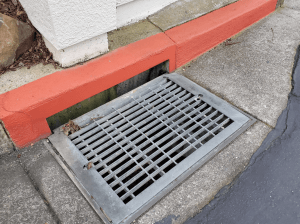Storm drainage systems are essential for managing water in urban areas, but they often face problems like blockages, damage, and pollution. These issues can cause flooding, harm the environment. In some cases, this may lead to regulatory penalties if not quickly fixed.
Regular inspections of these systems are important for keeping storm drainages working well. Professionals carry out these inspections to spot and fix problems like sediment build-up, debris blockages, and structural damage.
There are two main types of inspections: day Inspections for routine checks, and compliance Inspections to ensure the system meets environmental laws. These checks help prevent flooding, keep water clean, lengthen the system’s life, and ensure public health and safety by maintaining proper drainage function.
Inspections are typically done annually, after significant storms, before the rainy season starts, and whenever issues are noticed. Catching problems early through these inspections helps avoid expensive repairs and keeps the system running smoothly.
This guide will walk you through storm drainage system inspections. We will also guide you on keeping your drainage systems efficient and compliant with environmental standards.

What Are Storm Drainage Systems Inspections?
Storm drainage system inspections are detailed checks done to make sure that a city’s or property’s stormwater drainage is working well. These inspections are important for spotting any problems like blockages, wear and tear, or structural damage that could stop the system from working properly.
These evaluations are usually performed by trained professionals using various tools, including cameras to inspect inside the pipes. This is to accurately assess the condition of the stormwater system.
Types of Storm Drainage Inspections
According to the Georgia Department of Transportation’s Stormwater System Inspection and Maintenance Manual, there are two main types of storm drainage inspections: Day Inspections and Compliance Inspections. Each type is important in keeping drainage systems functioning properly and in compliance with regulations.
Day Inspections
Day Inspections are routine checks conducted annually to assess the condition of drainage structures. These inspections identify and document any problems or issues that need fixing. Only items that require attention are reported, following standard procedures. This approach maintains efficiency and helps address small problems before they become big issues.
The process involves a thorough visual assessment and may include checking for illegal discharges that could harm the environment. The results and actions from Day Inspections are recorded in a management system. This ensures that maintenance teams quickly address all identified issues.
Compliance Inspections
Compliance Inspections are more formal and required as part of the MS4 Permit, which mandates municipalities to control stormwater discharge and reduce pollutants. These inspections follow a strict checklist to ensure all parts of the drainage system meet environmental regulations. The permit outlines how often these inspections should be done, and a summary must be included in the annual MS4 report. Digital tools are often used to record data, but manual methods may also be used as a backup.
Why Are Storm Drainage System Inspections Important?
Like any infrastructure, storm drainage systems require regular maintenance to stay effective. Inspections are a necessary part of this maintenance process.
Below are some reasons why drainage system inspections are so important:
Preventing Flooding
Regular inspections help identify blockages, damage, or debris buildup that could obstruct water flow. Clearing these issues in time prevents flooding, which can cause significant damage to homes, businesses, and infrastructure.
Maintaining Water Quality
Storm drainage systems often carry rainwater directly to rivers, lakes, and other bodies of water. Inspections help detect and eliminate pollutants like oil, chemicals, and debris. This ensures cleaner runoff and better water quality.
Ensuring Regulatory Compliance
Municipalities must comply with environmental regulations like the MS4 Permit. Regular inspections ensure that the drainage system meets these standards and avoids potential fines or penalties.
Extending System Life
Identifying issues early can lead to timely repairs that extend the life of the drainage system and prevent costly repairs.
Preventing Erosion and Soil Loss
Properly functioning storm drainage systems help control the flow of stormwater and reduce erosion and soil loss in surrounding areas.
Protecting Public Health and Safety
Removing stagnant water and potential hazards minimizes the risks of waterborne diseases, pests, and dangerous debris that could harm people.
Efficient Budget Management
Addressing issues during inspections helps municipalities plan for maintenance and repairs. This leads to more efficient budgeting and avoiding unexpected expenses from emergency repairs.
When to Schedule Storm Drainage Inspections
Scheduling storm drainage inspections at the right times ensures your drainage systems remain functional and compliant. Here are some important times when you should consider scheduling these inspections
- Annually:
An annual inspection is standard practice to identify issues like blockages, structural damage, or pollutants. This regular checkup helps catch and fix small problems before they become costly repairs. - After Major Storms:
Severe storms can cause significant debris buildup, blockages, or damage to drainage systems. Scheduling inspections after heavy rainfall, hurricanes, or flooding is important to ensure the system is still functioning properly. - Before the Rainy Season:
Conducting inspections before the rainy season starts helps identify and fix potential problems. - When New Regulations Are Introduced:
If new regulations or environmental guidelines are introduced, an inspection can help ensure your storm drainage system meets the latest compliance standards. - During Construction or Renovation Projects:
If there’s ongoing construction or renovation near a storm drainage system, an inspection can ensure that runoff from the project won’t cause damage or pollution. - After Changes in Land Use:
Changes in land use, like new developments or landscape alterations, can affect water flow patterns. An inspection can verify that the storm drainage system can handle these changes effectively.

